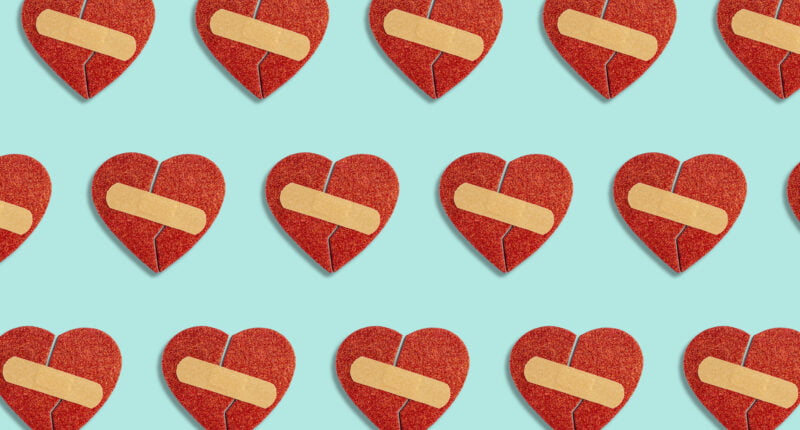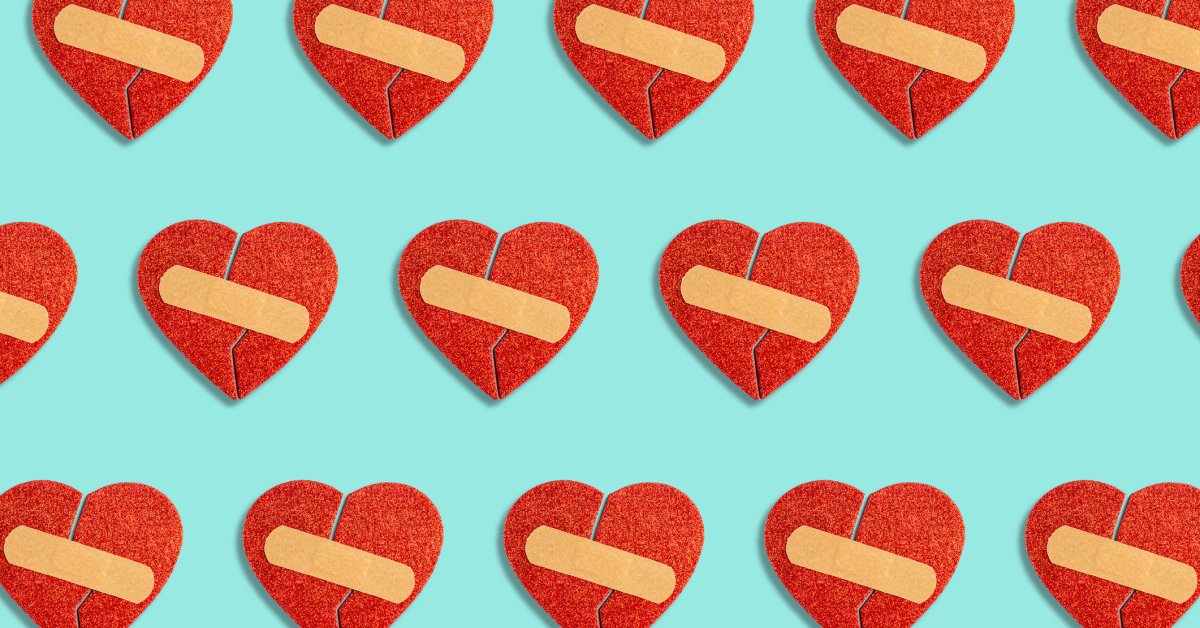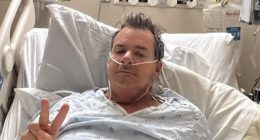You Can Actually Die of a Broken Heart – On May 26, 2022, Joe Garcia died suddenly of a heart attack just two days after his wife, Irma, was killed in the Uvalde, Texas school shooting. The papers reported a Garcia’s family member saying, “I truly believe Joe died of a broken heart.”
As a cardiac scientist working in this field, I am regularly asked to comment on tragic cases like these. Sometimes they are celebrities such as Debbie Reynolds, who died soon after her daughter, Carrie Fisher. But often, they are long-married couples who pass away on the same day or soon after.
These events can be rare and sporadic, so it is hard to find a pattern. But large and well-controlled studies are now confirming that this is a real phenomenon and are measuring its extent. A U.S. study on short and long-term associations between widowhood and mortality, following 12,000 people who are over 50 years old and in stable couples, showed that male participants were nearly twice as likely to die in the three months following their partners death, and that increased death rates were still seen over a year later.
Death from heart disease after bereavement can be sudden, especially when the circumstances are devastating as with the Uvalde shooting. Sudden cardiac death is usually caused by a massive disturbance in heart rhythm (or arrhythmia) called ventricular fibrillation, either as part of a heart attack, or just by itself. The heart twists and writhes in an uncoordinated way, and is no longer able to pump blood into the body. Without immediate CPR or access to a defibrillator, death occurs in around four minutes.
Read More: Y Chromosome Might Vanish One Day: What It Could Mean For Men?
The key instigator of this disastrous effect is adrenaline. We know that adrenaline is the heart stimulant that makes our hearts beat harder and faster when we exercise or in times of stress. Adrenaline is part of the fight-or-flight mechanism that has evolved to get us out of danger, and it brings extra calcium into the heart cells to increase the force of beating. Blood levels of adrenaline shoot up when we are under threat.
But adrenaline has a dark side—too much can throw the heart into calcium overload and uncontrolled arrhythmia.
Bereavement is a huge emotional shock, and this can cause a rapid surge of adrenaline. Other extreme physical or emotional stresses can have the same effect: earthquakes and other natural disasters, unaccustomed intense exercise, arguments, or taser stunning. Watching sport is a strong trigger, with cardiac admissions to hospitals regularly peaking during big football finals like the World Cup.
Most of us can cope with even very distressing events without tipping into drastic heart collapse. But what is it that makes the difference between dying of a broken heart and surviving a stressful event?
The clue has come from an unlikely source, another disease called broken heart syndrome, but with a very different demographic and outcome: Takotsubo syndrome. Takotsubo differs in that it is predominantly (80 to 90%) seen in post-menopausal women, compared to sudden cardiac death, which is 80% male. Exactly the same triggers are involved in sudden cardiac death, but the death rate is far lower—around 5%.
Typically, the Takotsubo patient comes into hospital after a stressful event and with all the signs of a heart attack: chest pain, electrical signal changes, and increased markers of heart damage in the blood. But when their heart is scanned, no blood vessel blockage or death of cardiac muscle is seen.
Instead, the cardiac heart muscle undergoes a very unusual pattern of partial paralysis, often around the lower part of the heart, known as the apex. New imaging picking up this pattern was first used in Japan over 20 years ago on patients being admitted for heart problems during an earthquake. The Japanese cardiologists named the condition after the tako-tsubo—a fishing pot meant for trapping octopus—because the left ventricle of the heart resembles this type of pot.
While there is an immediate danger to life from the heart failure, the most striking phenomenon is that recovery can be very rapid—days or weeks. Patients can walk out of hospital apparently perfectly well. Chronic heart failure this severe is usually very persistent and hard to reverse, even with the best treatments.
The triggers for sudden cardiac death are also the triggers for Takotsubo syndrome: bereavement and other strong emotional or physical stresses. Even pleasant but still emotional events, like a surprise birthday party, have been known to do the same. Two particular triggers stand out: an adrenaline-secreting tumor and the epi-pens used for anaphylactic shock, which contain adrenaline. Adrenaline (and drugs that mimic it) is the culprit in Takotsubo, as well.
But why is adrenaline now depressing heart function in these circumstances instead of stimulating it? And more importantly, why are post-menopausal women reacting in this very different way?
We decided to test this out. In a laboratory, we set up a system to explore the mechanism of Takotsubo cardiomyopathy. Rats were anaesthetised, and given a dose of adrenaline which would be equivalent (adjusted for their smaller body weight) to a single epi-pen treatment in a person. Amazingly, just this one dose was able to produce the Takotsubo pattern of paralysis at the apex of the rat heart, and the effect was reversible as the dose wore off over the course of a hour.
Using this model, we were able to work out that very high adrenaline could switch to a new signaling pathway that temporarily depressed cardiac function. Intriguingly, this new signaling system was also linked to known protective pathways which act to shield the heart against damage.
At last, we were ready to see if blocking this new signaling pathway would prevent Takotsubo, hoping that we would have a targeted treatment for the disease. Patients with Takotsubo were being treated supportively with the hope they would recover spontaneously, but there was no specific drug to give.
Our rats were given the blocker together with adrenaline to try to stop the Takotsubo effect, and it worked. The contraction of the heart was not depressed. But, to our dismay, blocking the new pathway also triggered massive arrhythmia. The high dose of adrenaline was overstimulating the heart and flooding the cells with an excess of calcium. Now, the adrenaline was mimicking the effects seen in sudden cardiac death, with ventricular fibrillation and rapid failure of cardiac function.
Our hoped-for Takotsubo cure was a disaster. However, it gave us a new and important insight into the disease. Maybe Takotsubo is an effort by the body to avert the worst consequences of a massive adrenaline surge, by switching signaling to a protective mode. The heart is temporarily shut down to prevent a worse outcome, and maybe this protective pathway is active in most of us—but in a less dramatic form—to save us from the effects of sudden stress. For instance, during panic attacks, people can report feeling as if they are having a heart attack, but this quickly wears off as they recover.
Finally, what is the basis for the sex difference in this response to adrenaline? Estrogen, we know, is a powerful protector against arrhythmia, and younger women seem less likely to get either of the broken heart syndromes. The difference in risk of sudden cardiac death between men and women is greatest below the age of 50. My personal conjecture is that the risk from the physical and emotional stress of labor and birth has led to an evolutionary pressure for protective mechanisms against adrenaline toxicity in fertile women.
Women in the menopausal range will have decreasing levels of estrogen, but still some residual amounts. Perhaps they are moving from the protected status of the younger women towards the more vulnerable male situation, but with still some remaining advantage? Men were 90% more likely to die in the first three months after bereavement, but for women in the 50-year-and-older range this figure was only 50%.
So yes, you can die of a broken heart, but your risk depends on both your sex and age. Perhaps, then, the better question remains: if you can die of a broken heart, why are so many of us spared?










